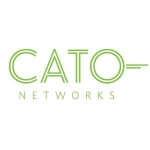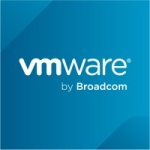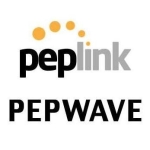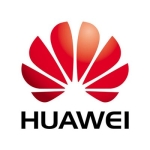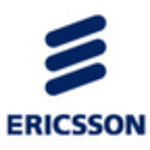What is our primary use case?
We use the solution to do a lot of proof of concept to evaluate the deployment, manageability of the solution, application availability, scalability, and cloud. These include secure cloud security integration with Umbrella and software-defined cloud interconnect (SD-WAN) use cases. We also evaluate end-to-end segmentation use cases.
How has it helped my organization?
In general, Cisco SD-WAN is a scalable tool that simplifies network management. It can be a great way to transform a legacy network into a more standardized one, which can help reduce operational issues.
Over time, a regular network with different point solutions can become very complex. There are different vendors for WAN, LAN, cloud security firewalls, etc. Each device may be configured separately, and each region may have its own IT team with its own way of working. All of it has created silos over the years. If you want to make a change or a rollout, It takes a lot of time to do a risk and impact assessment because there are hundreds of teams and hundreds of devices. Every device and no team or no region has a similar type of configuration. There is no useability. There are no template extensions. Every device is configured differently depending upon the liking of the individual who has done it on the first go.
However, with Cisco's SD-WAN, when you manage it through a central dashboard, you use templates, etc. You build that standardized configuration or discipline, for that matter, and you maintain it.
You have a common policy repository, and standard template, and use one template to configure 50 devices or one. If you have 100 similar devices, we do the same thing, which is very easy. It'll be too extreme, but it'll be far easier to understand that if I work 100 branches, this is how the branch organization will look. If I have 50 medium-sized branches or a corporate office, this is how the configuration will look.
The solution gives an immense opportunity for standardizing the network configuration. It reduces mean repair time, mean deployment time, and uses and predictability in operation. This will also improve your first-time deployment because the network is more predictive. Since I've been in the industry for 20 years, every time you make some change, you are 90% expecting one or the other surprises, which you'll have to deal with during the maintenance window.
Cisco enhances these aspects by providing an opportunity to make networks simpler. Simplicity is crucial for multiple family networks, and Cisco ensures improvement without unnecessary complexity.
What is most valuable?
The cloud environment, including cloud security integration, is very valuable because of the many API integrations with the SD-WAN. This includes monitoring tools, ThousandEyes, and the programmability aspect.
What needs improvement?
In the transition from Viptela to Cisco SD-WAN, there have been very huge revision cycles in the last three to four years. This does not happen for a stable product. Still, it is because Cisco has been migrating from one vendor and merging into their own operating system and making a lot of additional development beyond what is required. This has made it tough for enterprise-level integrators cannot find downtime to keep up with the upgrades. Cisco is working to stabilize the product, which will likely be much more stable in the coming years. So, I would like to see revision cycles to be more stable.
Another area of improvement is the licensing and pricing model. The Cisco SD-WAN licensing model needs to be simplified. There are currently three types of licenses: enterprise agreements, individual licenses, and DNA subscriptions. This can confuse customers, requiring a dedicated person to determine which type of license is right for their organization.
Although Cisco is working on many features, the general usability of the templating mechanism should be improved to make it easier to use and understand. The various GUI elements are different, as in Cisco Vault. If I migrate from a CLI to a GUI model for managing devices, the GUI is still more like Viptela. The GUI should be more aligned with the Cisco CLI regarding terms and concepts. The tools need to be more intuitive to use.
For how long have I used the solution?
I have been using Cisco SD-WAN for five years or more. We initially started with V19.2 and are currently using V20.9.
What do I think about the stability of the solution?
I rate the stability an eight out of ten. So, it's very stable.
What do I think about the scalability of the solution?
I rate the solution’s scalability an eight out of ten. It's fairly scalable unless you have the regional fabric aspect of a large network. So it's fairly scalable.
Most of our clients use this solution. We are engaged with about nine out of ten clients; we are involved in that. They fall between medium and enterprise businesses.
How are customer service and support?
It's an evolving technology with lots of changes happening and releases. So, it's the shared load of support requests that's causing the issues. But otherwise, Cisco Tech is very helpful.
However, they might be offloading tech support a little too much, which sometimes results in situations where we do not receive the expected level of technical support and the right quality of technical support due to the outsourced model. They were already outsourcing, but now, with additional vendors outsourcing, it's causing some confusion.
How would you rate customer service and support?
How was the initial setup?
I would rate my experience with the initial setup a seven out of ten, with one being difficult and ten being easy to set up because there are two situations.
If it is deployed on-prem, the setup is a little complicated. It was not tough for me, but for a new company, it would be tough.
The setup is easy if cloud deployment is for small, medium, and a few large companies. Setup becomes a little complicated if you have an on-prem deployment and other use cases, especially for banking, financial, and government.
So, for all large specifics where you need a lot of security for banking and finance, we would go with on-prem deployment. But for others, we always suggest cloud deployment. So, with the controllers. So, that is the AWS, but that completely manages the Cisco. Therefore, we cannot state that it could be directed to Azure data because Cisco manages that.
However, in other cases, when there's no specific cloud provider, we exclusively opt for clients. It entirely depends on what the client's workload is. Cisco is extending its reach to AWS, Azure, and Google, and perhaps in the future, there might be additional options. The major advantage is that Cisco can provide connectivity effectively. So, it doesn't really matter. We don't lean towards one over the other.
What about the implementation team?
The deployment time for a proof of concept is typically 40-60 hours, but a full-scale deployment will vary depending on the size of the organization's network.
About 80% of the time is dedicated to data gathering and planning for any deployment. This step involves understanding the existing network vs. old transformation to understand the data-gathering process.
Then, you create a high-level design for SD-WAN and discuss and explore different options, such as technology choices (fully managed, partially managed, peered approach), depending on the company's network profile, workload, and global or local footprint. These factors help to achieve a well-defined design.
Once the design is approved, the next step is understanding the existing services and their hosting locations, whether on-premises, different sites, or cloud. A deployment plan is formulated to minimize downtime following a pilot phase to assess stability, a comprehensive deployment is executed.
What's my experience with pricing, setup cost, and licensing?
The pricing is neutral. However, there is room for improvement in the licensing model.
What other advice do I have?
Take the opportunity to simplify your network while migrating. Since it is a new technology, and you do not simplify your network, you will end up in more complex situations than you were in the first place.
Overall, I rate the solution an eight out of ten.
Disclosure: My company has a business relationship with this vendor other than being a customer. partner









